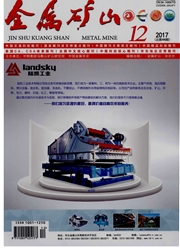

 中文摘要:
中文摘要:
基于传统强度折减法,提出了考虑岩土体蠕变时效特性的蠕变强度折减法。以重庆某滑坡工程为研究对象,选取主滑线剖面建立FLAC二维地质模型,采用蠕变强度折减法进行了滑坡的蠕变时效稳定性研究,结果表明:①经历相同蠕变时间,滑坡前缘监测点位移量最大,其次为滑体底部监测点,说明滑坡发生变形破坏首先从前缘开始≮并沿滑动面逐渐向后缘发展;②考虑岩土蠕变特性的滑坡长期稳定性系数为1.18,较未考虑蠕变的滑坡稳定性系数1.26降低了6.3%,说明蠕变不利于滑坡稳定,建议采用稳定性系数1.18作为滑坡治理和地灾危险性评估的依据。
 英文摘要:
英文摘要:
Based on the traditional strength reduction technique, the creep strength reduction technique of considering creep property of rock and soil medium have been proposed. The FLAG2D geological model of the main slip line profile is estab- lished, and the creep aging stability of landslide is studied by using creep strength reduction technique with respect to a land- side in Chongqing city. The results show that :①the displacement of monitoring point in landslide leading edge is the biggest, followed by that trader sliding bottom when experienced the same creep time. It indicates that landslide damage begins with the leading edge and generally moves to the trail edge along with the sliding surface;②the landslide long-term stability coefficient is 1.18 with considering creep property of rock and soil medium,and it's 1.26 with not,lower by 6.3%. It indicated that creep is not conducive to the stability of landslide. It suggests the stability coefficient 1.18 as the parameter for engineering design and geological hazard assessment.
 同期刊论文项目
同期刊论文项目
 同项目期刊论文
同项目期刊论文
 期刊信息
期刊信息
